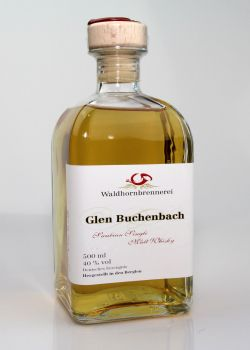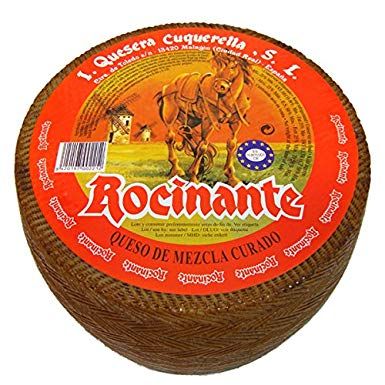Now in its twelfth year, Class 46 is dedicated to European trade mark law and practice. This weblog is written by a team of enthusiasts who want to spread the word and share their thoughts with others.
Click here subscribe for free.
Who we all are...
Don’t be afraid of GIs - part 4 of Annual Conference
 Should trade mark practitioners fear geographical indications? As Jürg Simon, of Lenz & Staehelin in Switzerland said in part 4 of this year’s MARQUES Annual Conference, the law around GIs is complicated with different legal means including registered rights and other laws protecting signs that belong to a particular geographical region and relate to a product that has certain characteristics. “There is a huge basket of law dealing with GIs,” he noted.
Should trade mark practitioners fear geographical indications? As Jürg Simon, of Lenz & Staehelin in Switzerland said in part 4 of this year’s MARQUES Annual Conference, the law around GIs is complicated with different legal means including registered rights and other laws protecting signs that belong to a particular geographical region and relate to a product that has certain characteristics. “There is a huge basket of law dealing with GIs,” he noted.
“A GI is a territorial right, like all other IP rights. Whether it functions as a GI depends on how it is perceived by consumers in that territory,” said Marcus Höpperger of WIPO in Switzerland. That complicates international protection, he added, although attempts have been made to agree standards, both multilaterally through the Lisbon Agreement and bilaterally.
Carleen Madigan of the Irish Whiskey Association, which works in 140 export markets, provided some insight into the role GIs can play. “A lot of developments enhance our protection to protect Irish Whiskey on an international level,” she said. In particular, the EU has concluded a number of bilateral agreements, including recently with India, which is the world’s biggest whiskey market. “Obtaining GI status is our preferred option, but many countries don’t have specific laws so we also look at trade marks, collective and certification marks,” said Carleen. For example, the Association has recently taken action successfully against "St Patrick Whiskey" being sold in Belarus.
Latest developments
The panel, moderated by Ortrun Günzel of df-mp Dörries Frank-Molnia & Pohlman in Germany, began by discussing recent developments in GI protection. Marcus revealed that the EU has agreed in principle to adhere to the Geneva Act of the Lisbon Agreement, with a final decision expected later this year. “That’s really useful for us,” said Carleen. Switzerland is also considering ratifying the Geneva Act, likely in 2021 or 2022, said Jürg. The Act needs five ratifications to come into effect. So far there are just two, so it is expected to enter into force within the next two years.
 Brexit poses particular challenges for the Irish Whiskey Association, as there are GIs for the island of Ireland that span the border between Ireland and Northern Ireland. Carleen said they will continue to be protected in both the EU and UK whatever happens with Brexit, which is not necessarily the case for other European GIs in the UK if there is no deal.
Brexit poses particular challenges for the Irish Whiskey Association, as there are GIs for the island of Ireland that span the border between Ireland and Northern Ireland. Carleen said they will continue to be protected in both the EU and UK whatever happens with Brexit, which is not necessarily the case for other European GIs in the UK if there is no deal.
Notable cases
The panel discussed several recently decided or pending cases involving GIs and related issues. These included:
- The Scotch Whisky Association has taken action against Glen Buchenbach whisky from Germany using the word “Glen” because it evoked Scotch whisky. The CJEU ruled that under the Spirits Regulation the word Glen was not a commercial use of the GI but that evocation can occur if the term triggers an image of the protected GI. The Court set out a six-step test, said Jürg, the final step of which concerns “conceptual proximity”. “It’s paradise for IP litigation lawyers,” he added, while Carleen said: “It’s a positive ruling for us.” Marcus added that Article 11 of the Geneva Act could also be interpreted to provide protection against evocation.
- Another case that addresses similar questions concerns Aceito Balsamico di Modena and is pending at the CJEU. The Advocate General’s opinion was published in July this year.
 The Queso Manchego case, decided earlier this year by the CJEU, involved a manufacturer of Rocinante cheese with packaging resembling the character Don Quixote de la Mancha and other images associated with the region. “The lesson is figurative signs alone can under certain circumstances evoke a protected designation of origin, even if they do not use the name of the PDO,” said Jürg. “It’s protection that would make even a famous trade mark owner very happy,” added Ortrun. However, it raises questions about the average consumer across the EU.
The Queso Manchego case, decided earlier this year by the CJEU, involved a manufacturer of Rocinante cheese with packaging resembling the character Don Quixote de la Mancha and other images associated with the region. “The lesson is figurative signs alone can under certain circumstances evoke a protected designation of origin, even if they do not use the name of the PDO,” said Jürg. “It’s protection that would make even a famous trade mark owner very happy,” added Ortrun. However, it raises questions about the average consumer across the EU.- The final case discussed by the panel was the pending Morbier cheese case, in which the CJEU has been asked: “Must Article 13(1) of Council Regulation No 510/2006 of 20 March 2006 1 and Article 13(1) of Regulation No 1151/2012 of the European Parliament and of the Council of 21 November 2012 2 be interpreted as prohibiting solely the use by a third party of the registered name, or must they be interpreted as prohibiting the presentation of a product protected by a designation of origin, in particular the reproduction of the shape or the appearance which are characteristic of it, which is liable to mislead the consumer as to the true origin of the product, even if the registered name is not used? (emphasis added)”. In Switzerland, said Jürg, the courts have ruled that consumers can be deceived even without the name of the PDO being used.
Don’t be afraid!
Questions remain open about how broadly GIs can be protected, whether they can be enforced against dissimilar goods and whether they can cover services. But the panel agreed that the scope of protection of GIs, particularly in Europe, is potentially vast. “Brand owners need to include GIs in their trade mark clearance projects, but there are challenges to that, including searchability,” said Ortrun. “Speak to a specialist and make sure you are aware of where the protection line is drawn,” added Marcus.
Posted by: Blog Administrator @ 18.36Tags: GI, PDO, WIPO, Irish Whiskey, Queso Manchego, ,


 Sharing on Social Media? Use the link below...
Sharing on Social Media? Use the link below...Perm-A-Link: https://www.marques.org/blogs/class46?XID=BHA4784

